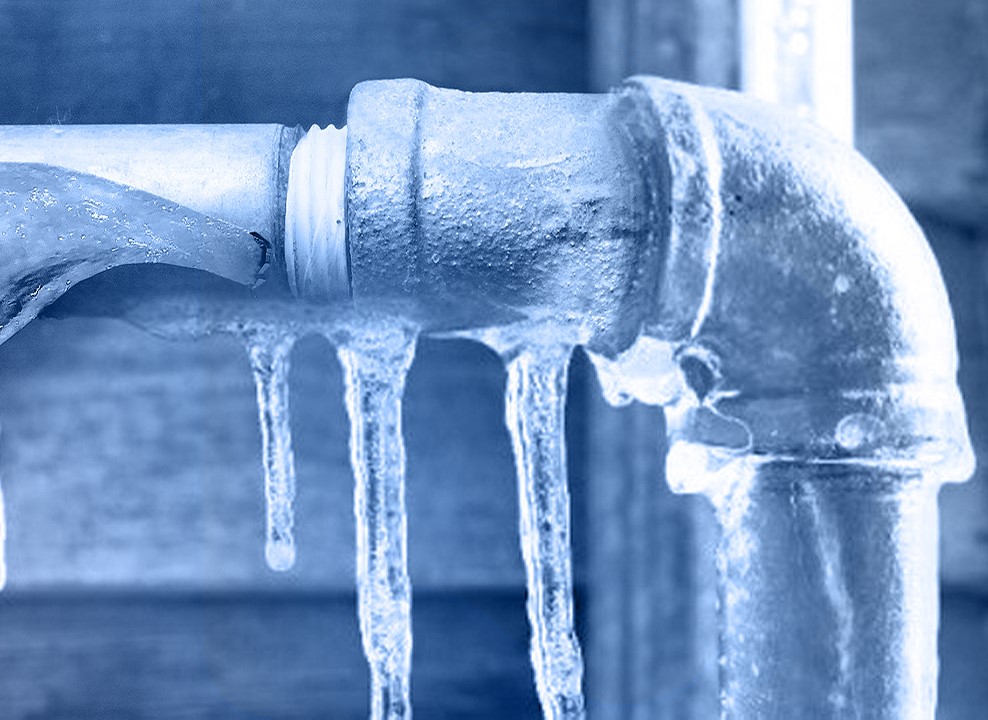Protecting Against Frozen Plumbing: Best Tips for Winter
Protecting Against Frozen Plumbing: Best Tips for Winter
Blog Article
What're your thoughts and feelings on Prevent Frozen Pipes ?
:strip_icc()/snow-outdoor-faucet-pipes-4af65d1e5e904fb1aa7bf74071fe5d89.jpg)
Cold weather can ruin your pipes, specifically by freezing pipes. Below's just how to stop it from taking place and what to do if it does.
Intro
As temperature levels decrease, the danger of icy pipes increases, possibly causing costly repair services and water damage. Understanding exactly how to avoid icy pipes is essential for home owners in chilly environments.
Prevention Tips
Protecting prone pipes
Cover pipelines in insulation sleeves or utilize warm tape to safeguard them from freezing temperatures. Concentrate on pipelines in unheated or outside areas of the home.
Home heating strategies
Maintain interior rooms properly heated, specifically areas with pipes. Open up cupboard doors to allow cozy air to circulate around pipes under sinks.
Exactly how to recognize icy pipes
Try to find lowered water flow from taps, uncommon smells or noises from pipelines, and visible frost on exposed pipes.
Long-Term Solutions
Architectural adjustments
Take into consideration rerouting pipes away from outside walls or unheated areas. Add additional insulation to attics, basements, and crawl spaces.
Upgrading insulation
Buy high-quality insulation for pipelines, attic rooms, and walls. Proper insulation helps maintain constant temperatures and decreases the risk of frozen pipes.
Protecting Outside Plumbing
Yard hose pipes and exterior taps
Separate and drain pipes garden hoses prior to winter months. Set up frost-proof spigots or cover outdoor taps with insulated caps.
Understanding Icy Pipes
What triggers pipelines to freeze?
Pipelines freeze when revealed to temperature levels below 32 ° F (0 ° C) for prolonged periods. As water inside the pipes ices up, it expands, taxing the pipe walls and possibly causing them to break.
Risks and problems
Icy pipes can cause water supply interruptions, building damages, and pricey repair services. Ruptured pipes can flood homes and create considerable architectural damage.
Signs of Frozen Piping
Determining frozen pipelines early can avoid them from bursting.
What to Do If Your Pipes Freeze
Immediate activities to take
If you think frozen pipes, keep taps open to relieve pressure as the ice melts. Use a hairdryer or towels soaked in warm water to thaw pipelines slowly.
Final thought
Stopping icy pipelines calls for proactive steps and fast feedbacks. By comprehending the causes, indicators, and safety nets, homeowners can protect their plumbing during winter.
5 Ways to Prevent Frozen Pipes
Drain Outdoor Faucets and Disconnect Hoses
First, close the shut-off valve that controls the flow of water in the pipe to your outdoor faucet. Then, head outside to disconnect and drain your hose and open the outdoor faucet to allow the water to completely drain out of the line. Turn off the faucet when done. Finally, head back to the shut-off valve and drain the remaining water inside the pipe into a bucket or container. Additionally, if you have a home irrigation system, you should consider hiring an expert to clear the system of water each year.
Insulate Pipes
One of the best and most cost-effective methods for preventing frozen water pipes is to wrap your pipes with insulation. This is especially important for areas in your home that aren’t exposed to heat, such as an attic. We suggest using foam sleeves, which can typically be found at your local hardware store.
Keep Heat Running at 65
Your pipes are located inside your walls, and the temperature there is much colder than the rest of the house. To prevent your pipes from freezing, The Insurance Information Institute suggests that you keep your home heated to at least 65 degrees, even when traveling. You may want to invest in smart devices that can keep an eye on the temperature in your home while you’re away.
Leave Water Dripping
Moving water — even a small trickle — can prevent ice from forming inside your pipes. When freezing temps are imminent, start a drip of water from all faucets that serve exposed pipes. Leaving a few faucets running will also help relieve pressure inside the pipes and help prevent a rupture if the water inside freezes.
Open Cupboard Doors
Warm your kitchen and bathroom pipes by opening cupboards and vanities. You should also leave your interior doors ajar to help warm air circulate evenly throughout your home.

Do you like more info about How to Prevent Your Pipes From Freezing? Post a short review directly below. We will be happy to know your insights about this post. We hope that you visit us again before long. Are you aware of anybody else who is sincerely interested in the topic? Feel free to share it. Thanks for going through it.
Call Today Report this page